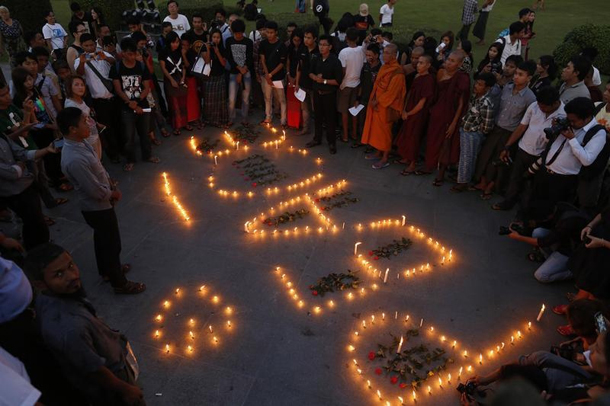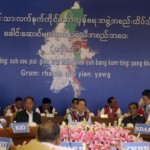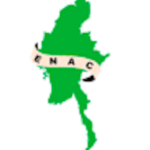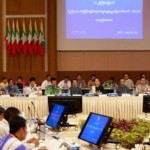By Bertil Lintner/The Irrawaddy | May 6, 2016
Burma’s new government has declared that finding a solution to the country’s decades-long civil war is one of its top priorities. That is clearly in line with the policies of the ruling National League for Democracy (NLD), which stated when the party was formed in September 1988, “
But in order to achieve peace, it is also obvious that the new government must find a novel approach to this issue.
In late 2012, Thein Sein, the previous president, set up an organization called the Myanmar Peace Center and, with massive financial support from the international community, embarked on an ambitious program of talks with Burma’s many ethnic armed organizations (EAO). But the problem was that the Myanmar Peace Center put the cart before the horse by asking the EAOs to sign a “nationwide ceasefire agreement” first and hold political talks later. In practice, that meant that groups which agreed to a ceasefire with the government army would be rewarded with lucrative business opportunities. And then, perhaps, some political talks would be held.
Not surprisingly, that policy turned out to be a complete failure. There were few takers, and, as a face-saving gesture in the 11th hour before the end of its term, the Thein Sein government invited some EAOs to Naypyidaw where a “Nationwide Ceasefire Agreement” was signed on Oct. 15 last year—hardly by coincidence less than a month before the election. It was said that eight EAOs had signed the agreement, but five of the signatories had no armed forces, and one—the Democratic Karen Benevolent Army—had been a government-allied militia since it broke away from the Karen National Union (KNU) in December 1994. That means only two of the signatories were actually engaged in armed struggle against the government: the KNU and the Restoration Council of Shan State (RCSS).
None of the other main EAOs in the country signed the October agreement: the Kachin Independence Army (KIA), the Ta’ang National Liberation Army (TNLA), the United Wa State Army (UWSA), the Myanmar National Democratic Alliance Army (MNDAA), the National Democratic Alliance Army (eastern Shan State), and the Shan State Army (whose name the RCSS has taken, causing confusion among the Shans as well as outsiders). Those groups together account for more than four-fifths of all ethnic combatants in the country.
Since then, the agreement has caused divisions between the groups that signed it and those that didn’t. The RCSS, evidently with the approval of the Tatmadaw, Burma’s military, moved at least 2,000 soldiers from its bases along the Thai border to northern Shan State, where they are engaged in battles with the ethnic Palaung TNLA. The TNLA’s allies, the UWSA, the KIA, the Shan State Army and the MNDAA, have vowed to fight the RCSS unless it ceases attacks on the Palaungs.
The KNU has not split officially, but divisions run deep within the organization over the controversial accord with the government. On Nov. 5, less than three weeks after the conference in Naypyidaw, two prominent Karen leaders made a surprise appearance at a meeting of EAOs at Panghsang, the UWSA headquarters. However, they came as representatives of the Karen National Defense Organization, the KNU’s village militia forces, so as not to prompt an open rift within the Karen movement.
This divide-and-rule policy, coupled with bribes to leaders of the EAOs to sign a “ceasefire agreement,” can hardly be the way forward. The best that could be done with the Oct. 15 agreement would be to file it away and let it die the death it deserves.
On the other hand, the EAOs that did not sign it have failed to come up with a viable alternative to the now stalled “peace process.” They have also been reactive rather than proactive, and are now doing little more than waiting for the new government to invite them to talks. Cynics would argue that some of the EAO leaders may also be waiting to hear what lucrative deals the new government may offer them, and if those would be even better than the business deals awarded the KNU, the RSCC and others.
But it should not be too difficult to come up with a comprehensive roadmap for peace, even though the situation in Burma today has been made even muddier by the presence of a host of foreign carpetbaggers. Styling themselves as “peacemakers,” they have shown that they have little or no understanding of Burma’s ethnic problems—and that their main interest is to cash in on the peace bonanza that the flow of foreign funds has resulted in, not to alleviate the sufferings of the people in the frontier areas.
A simple way forward could look like this: As a first step, the government should announce a nationwide ceasefire. Nothing has to be signed at this stage, but some on-the-ground monitoring would be required.
Then the government should invite leaders of the EAOs, representatives of civil society groups and religious organizations for talks about the way forward.
Step three would be to study federal models that would provide lasting solutions to the ethnic conflicts and thereby strengthen the Union. A continuation of the civil war will only be detrimental to national unity, as has been the case been for decades.
Then, a federal model should be agreed upon in line with the aspirations of the non-Bamar peoples—and the promises of the NLD’s 1988 manifesto of “the highest degree of autonomy consonant with the inherent rights of the minorities and the well-being of the Union as a whole.”
As a fifth and final step, a political agreement should be signed, the EAOs could be dissolved and turned into local police forces or whatever they, civil society and the government think would be the best solution. Such an accord could be considered a successor to the historic 1947 Panglong Agreement, at which Aung San Suu Kyi’s father, Gen. Aung San, worked with leaders from ethnic groups to decide how the Union of Burma would be constituted. But as was with the first Panglong Agreement, these new terms should be signed only after a consensus has been reached on what kind of political structure Burma should have.
This may not be easy, but solving decades-long conflicts never is. At the very least, it would be more constructive than the policies of the previous government and its supporters in the international donor community. The main task has to be to bring one of the world’s longest-lasting ethnic wars to an end, not to benefit from it financially in terms of funding for various, largely meaningless “peace projects.” After decades of “misfortune verging on the tragic,” as the NLD stated in 1988, the people of Burma, regardless of nationality, deserve nothing less than to live in peace and harmony with each other.
Bertil Lintner is a former correspondent with the Far Eastern Economic Review and author of several books on Burma.
This article originally appeared on The Irrawaddy on April 25, 2016.






